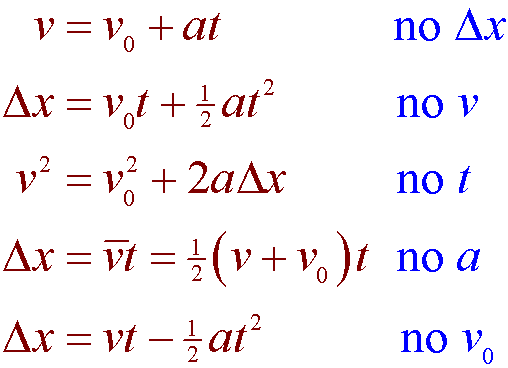Marvelous Equations Of Motion

V v 0 at.
Equations of motion. Alfred North Whitehead 1861-1947 Equations of Motion set of mathematicalequations which describe the forces and movements ofa body. The equations of motion are used to describe various components of a moving object. Three Equations of Motion The equations that relate displacement S time taken t initial velocity u final velocity v and uniform acceleration a are called equations of motion.
Definition of Equations of Motion Equations of motion in physics are defined as equations that describe the behaviour of a physical system in terms of its motion as a function of time. This section is about solving problems relating to uniformly accelerated motion. S s 0 v 0 t ½at 2.
To learn more about Motion enrol in our full course now. Second Equation of Motion Now coming to the second equation of motion it relates displacement velocity acceleration and time. There are three equations of motion that can be used to derive components such as displacement s velocity initial and final time t and acceleration a.
Equations of motion relate the displacement of an object with its velocity acceleration and time. Hence these equations are used to derive the components like displacement s velocity initial and final time t and acceleration a. Consider an object moving along a straight line with a uniform acceleration a.
In case of uniform acceleration there are three equations of motion which are also known as the laws of constant acceleration. F m a F m a In cases where accelerations only exist in a single dimension we can reduce the above vector equation into a single scalar equation. V ½v v 0 average velocity.
Hamilton derived the canonical equations of motion from his fundamental variational principle chapter 92 and made them the basis for a far-reaching theory of dynamics. The motion of an object can follow many different paths. Traditional name equation relationship.













